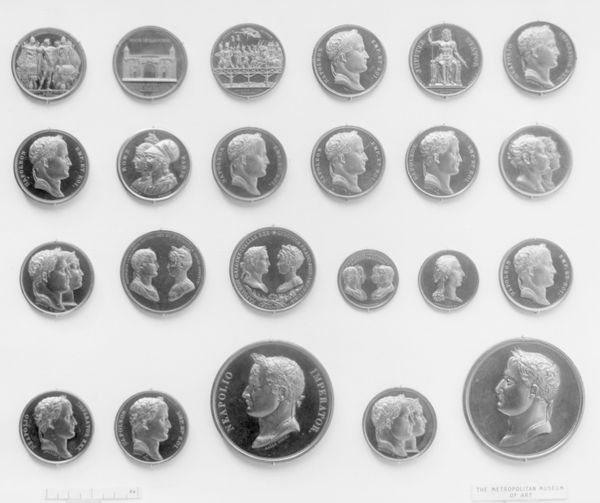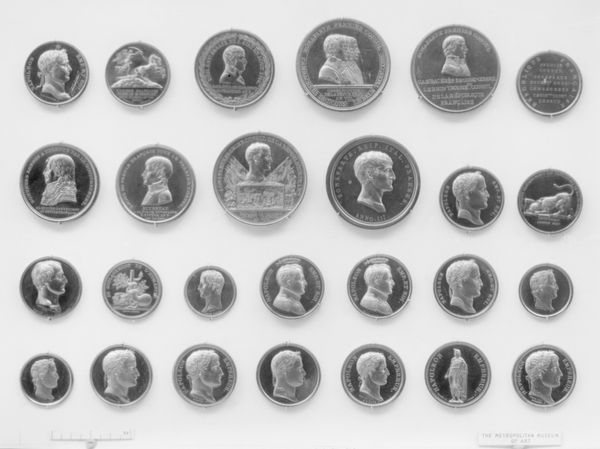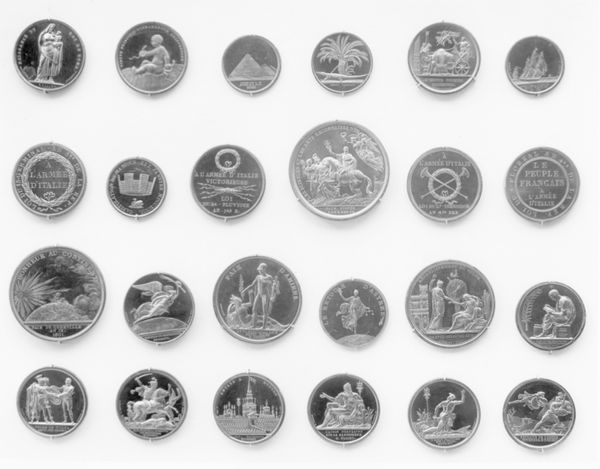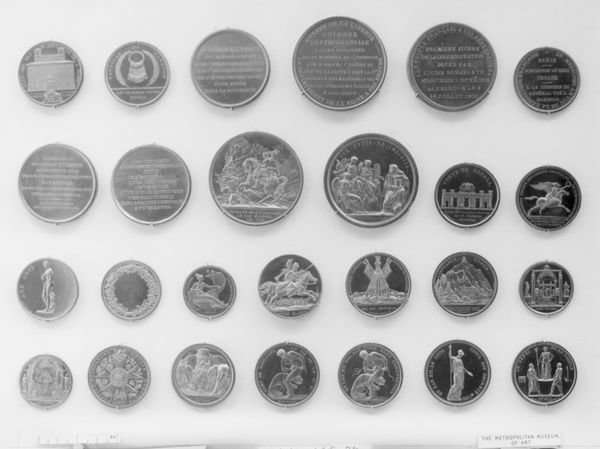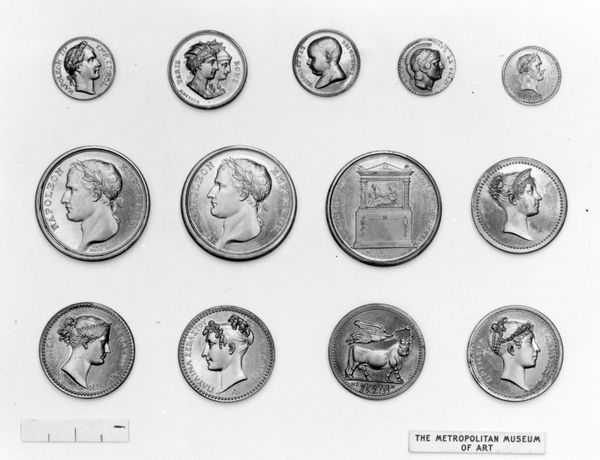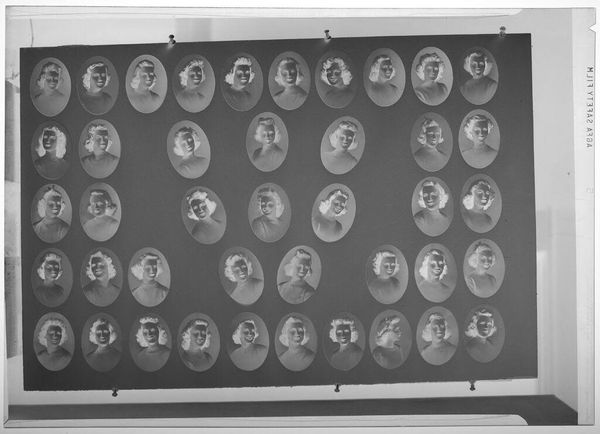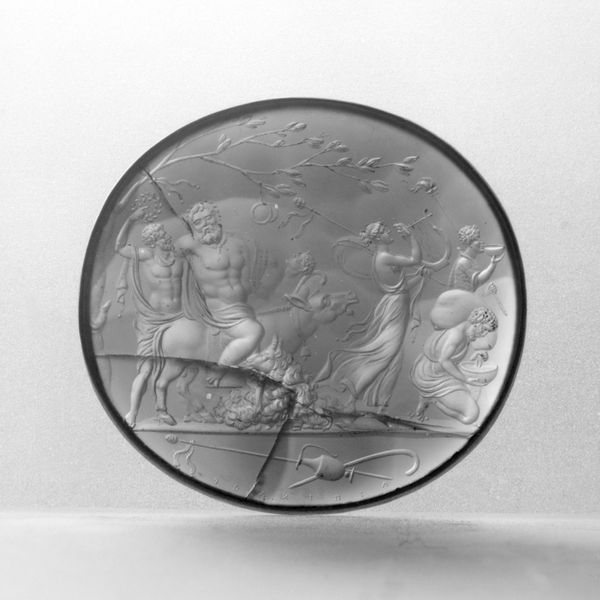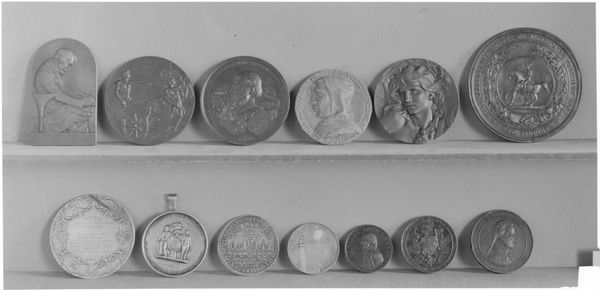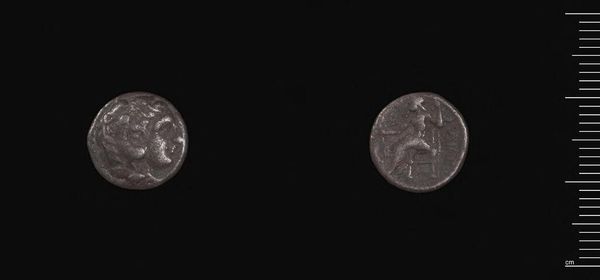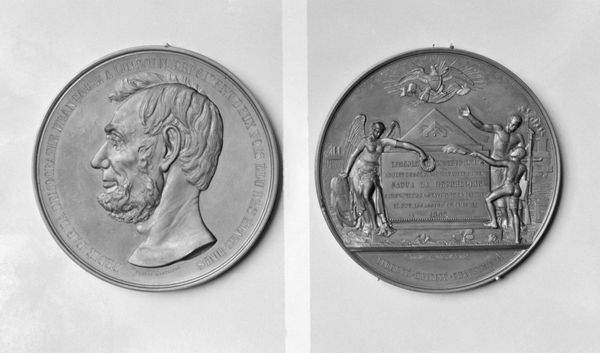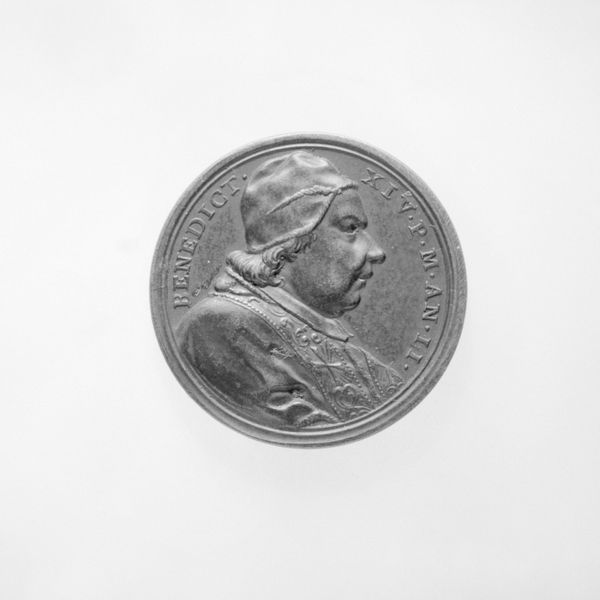
print, metal, sculpture
#
medal
# print
#
metal
#
sculpture
#
decorative-art
Dimensions: Diameter: 2 in. (5.1 cm)
Copyright: Public Domain
Curator: Welcome to the Metropolitan Museum of Art. We are standing before “The Peace of Amiens, 1802," a series of medals, likely crafted from metal, created in the 19th century by Rambert Dumarest. Editor: My first thought? What a fascinating array of discs. I'm struck by how the reflective surface and slight relief create this interplay of light and shadow. There's almost a spectral quality to them. I'm instantly curious about their specific materiality – the type of metal, the methods used in production and what kind of tools might have been needed to create the molds for each scene. Curator: Well, that is part of their appeal, right? Dumarest uses this material format to commemorate a specific moment: The Peace of Amiens, a brief pause in the Napoleonic Wars. Medals historically symbolize honor, victory, or important events, serving almost as a visual record—tangible mementos. Look at the figures included in many of these small metal medallions. Bonaparte's visage is cast, immortalized on various medallions within this array, isn’t it interesting how some medals repeat the same figure? The continuity highlights the effort in maintaining this specific historical memory and his image, doesn't it? Editor: Exactly. These aren’t just symbols; they're also commodities, reflecting the power dynamics of the era. The decision to mass-produce and distribute such medals suggests a conscious effort to disseminate propaganda to shape public opinion. I am also drawn to what are the circumstances that led to the making of them and how were these metals circulated. Were these owned privately? Or meant to be sold, or used as some type of prize? Curator: The symbolic weight shifts too if that’s the case. Their preservation tells another story about remembrance, right? In this context the choice of metal as a medium also contributes to a sense of permanence, doesn't it? It mirrors that desire to make an event eternal. What do you make of that miniature of a nude figure towards the top right, and in general, what stories might have unfolded after they were sold, given, received, and traded. Who treasured them and for what purpose? Editor: Yes, I completely agree. The scale invites a kind of intimate engagement. We have to get close, peer in to decipher the figures. I'm imagining the artisan labor required for this sort of miniature detail to create each of the pieces here that form an interesting commentary in the history and process. Curator: Absolutely, it's fascinating to consider these medals, both as symbolic carriers of meaning and as tangible artifacts of a particular moment in history. Thank you for joining me on this closer look. Editor: My pleasure! They prompt so many thoughts about materials and modes of art, as well as, the impact it has across different cultural audiences, don't they?
Comments
No comments
Be the first to comment and join the conversation on the ultimate creative platform.
